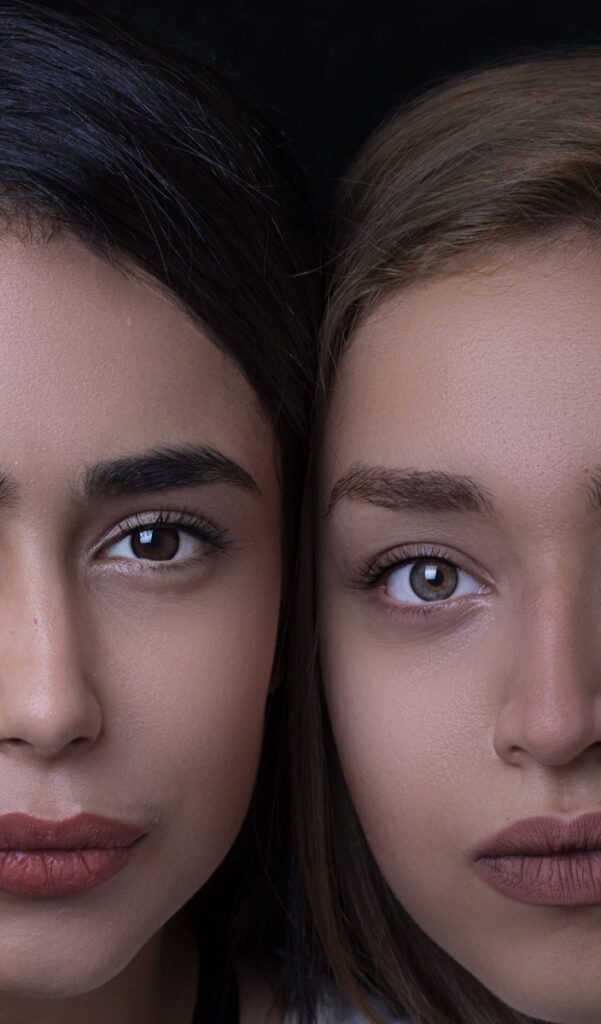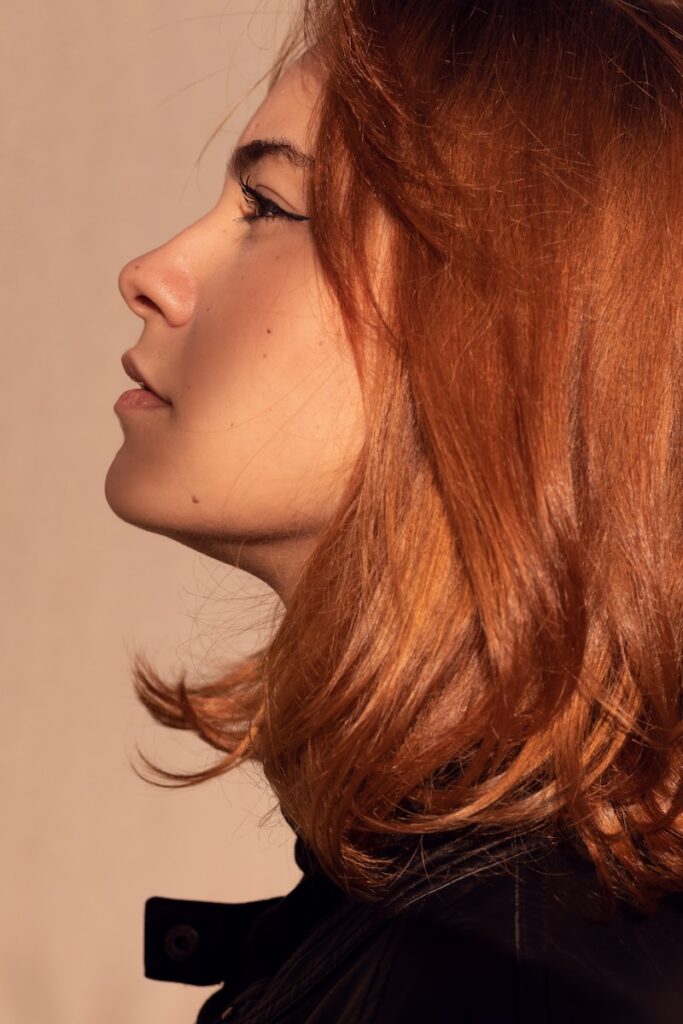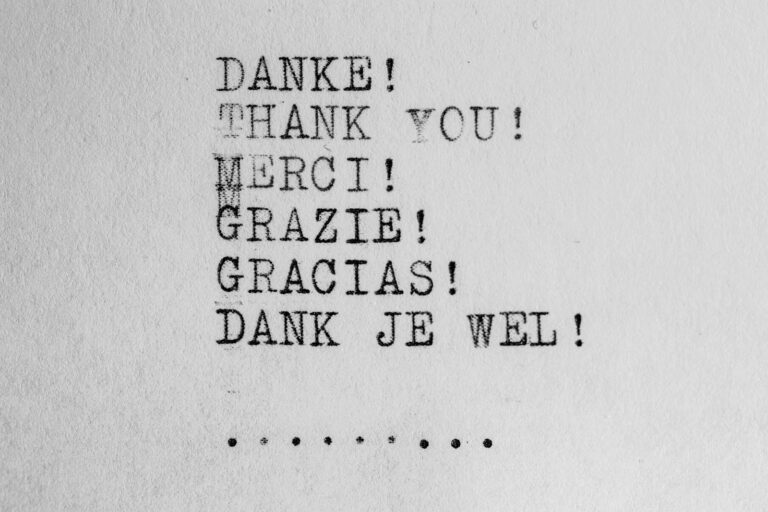How to Say Pretty Woman in Spanish: A Complete Guide
Imagine you’re strolling through a vibrant Spanish market, the air filled with the scent of fresh flowers and sizzling street food. You spot a stunning woman with a radiant smile, and you want to compliment her. But how do you say “pretty woman” in Spanish without fumbling over your words?
You’re not alone—many of us have been in that exact situation, feeling the pressure to make a good impression. The good news? It’s simpler than you think. In Spanish, you can say “mujer bonita” or “mujer hermosa” to convey that she’s beautiful. Each phrase has its own nuance, and knowing when to use them can make all the difference.
The Basic Translation: “Mujer Bonita”

Ever find yourself captivated by someone and want to express it in Spanish? Saying “mujer bonita” can do the trick. This phrase translates to “pretty woman” and has a lovely ring to it.
Breaking Down the Phrase
Let’s investigate deeper into what makes up this charming phrase.
“Mujer” – Meaning and Pronunciation
Mujer means “woman” in English. Pronounced /muˈxeɾ/ (moo-HEH-r), it’s a fundamental word you’ll often encounter. Picture this: you’re in a bustling Spanish plaza and spot a street artist sketching a beautiful portrait. You might hear someone say, “Esa es una mujer elegante” (That is an elegant woman).
“Bonita” – Meaning and Pronunciation
Bonita translates to “pretty” or “nice.” Pronounced /boˈnita/ (boh-NEE-tah), this word adds a sweet touch to any compliment. Imagine complimenting a friend’s photo, saying, “Tu vestido es bonita” (Your dress is pretty). It’s a term brimming with kindness.
Putting It Together: “Mujer Bonita”
When mujer and bonita come together, they form a simple yet beautiful compliment: “mujer bonita.” Pronounced /muˈxeɾ boˈnita/ (moo-HEH-r boh-NEE-tah), it flows easily off the tongue.
Correct Pronunciation
Smooth pronunciation is key to sounding natural. Ensure a seamless blend between mujer and bonita by maintaining a steady rhythm. Practice it like you’re creating music, hitting the right note at the right time.
When and How to Use This Phrase
Curious about when to drop this phrase into conversation? Use it in casual settings to compliment someone you find attractive. Maybe you’re at a café, and spot someone who catches your eye. You could say, “¿Quién es la mujer bonita en el rincón?” (Who is the pretty woman in the corner?). It’s a perfect, charming way to express admiration.
Here’s a table to make these details clear:
Spanish Term | Meaning | Pronunciation | Example Sentence |
|---|---|---|---|
Mujer | Woman | /muˈxeɾ/ | “Esa es una mujer elegante.” |
Bonita | Pretty, Nice | /boˈnita/ | “Tu vestido es bonita.” |
Mujer Bonita | Pretty Woman | /muˈxeɾ boˈnita/ | “¿Quién es la mujer bonita en el rincón?” |
By understanding these elements, you’re not just memorizing a phrase, but connecting deeply with the language and its culture.
Alternative Ways to Say “Pretty Woman” in Spanish

There’s something enchanting about complimenting someone in another language. Spanish, with its lyrical quality, offers beautiful ways to describe a pretty woman. Let’s jump into some captivating alternatives.
“Mujer Hermosa” (Beautiful Woman)
The term “mujer hermosa” radiates elegance. It’s the choice of words that feels as if it’s wrapping the compliment in gold. Whether you’re in Spain or Latin America, this phrase is universally understood and appreciated.
Difference between “bonita” and “hermosa”
Though both “bonita” and “hermosa” translate to beautiful, they convey different depths of admiration. “Bonita” suits everyday compliments, similar to saying someone looks nice. In contrast, “hermosa” implies an almost profound admiration, suggesting an inner as well as outer beauty.
When to Use “Hermosa” Instead of “Bonita”
Reserve “hermosa” for special moments. Imagine you’re at a wedding, praising the bride: “La novia es una mujer hermosa.” This term elevates the compliment, making it perfect for formal occasions or significant people in your life.
“Mujer Guapa” (Attractive Woman)
“Mujer guapa” is an endearing and casual way to describe attractiveness. Often heard in Spain, it’s like calling someone charmingly attractive. The term feels warm, like a spontaneous hug.
Regional Usage of “Guapa”
While “guapa” is favored in Spain, it’s less common in Latin America, where you might hear “linda” or “hermosa” more frequently. Picture vivid Madrid streets and the friendly banter: “¡Eres tan guapa!” – it’s effortlessly affectionate.
Comparison with “Bonita” and “Hermosa”
Curious how “guapa” stacks up against “bonita” and “hermosa“? It’s like comparing “cute” with “pretty” and “beautiful.” “Guapa” lies somewhere between “bonita” and “hermosa” in terms of intensity and formality:
Other Useful Adjectives
Spanish offers a treasure trove of charming adjectives for describing a pretty woman. Here are a few more to add to your repertoire.
“Linda” (Cute, Pretty)
“Linda” conveys a cuteness or endearing quality. Common in Latin America, it’s sweeter than “guapa” and less formal than “hermosa.” Think of a friendly compliment at a casual gathering: “Eres tan linda.”
“Bella” (Beautiful)
“Bella” is another word for beautiful, similar to “hermosa.” It’s universal, spanning both Spain and Latin America. Use it to make someone feel genuinely special: “Tú eres bella.”
“Preciosa” (Gorgeous)
When you really want to amp up the compliment, “preciosa” comes to rescue. Translating to “gorgeous,” this term exudes admiration and delight: “Qué sonrisa preciosa tienes.”
Table of Adjectives
To simplify your complimenting journey, here’s a handy table summarizing these adjectives:
Spanish Term | Translation | Usage Context | Formality |
|---|---|---|---|
Bonita | Pretty | Everyday, casual compliments | Informal |
Hermosa | Beautiful | Important events, deep admiration | Formal |
Guapa | Attractive | Casual, especially in Spain | Casual |
Linda | Cute, Pretty | Friendly, often in Latin America | Informal |
Bella | Beautiful | Universal, elegant compliments | Moderate to Formal |
Preciosa | Gorgeous | Highly flattering, enthusiastic | Moderate |
By weaving these words into your compliments, you’re not just saying someone looks nice. You’re offering a piece of the Spanish language’s rich, emotive character. Why settle for just “pretty” when words like “hermosa” and “preciosa” can paint a brighter picture?
Spanish Grammar: Constructing Phrases with “Pretty Woman”

Understanding how to structure phrases in Spanish can make your compliments more meaningful. Discover the nuances between different ways to say “pretty woman”.
Basic Sentence Structure
In Spanish, the sentence structure can change the emphasis and nuance. Knowing these differences helps convey your feelings accurately.
“Ella es una mujer bonita” (She is a pretty woman)
This sentence translates directly to “She is a pretty woman”. Here, ella (she) is the subject while una mujer bonita (a pretty woman) is the predicate.
“Esa es una mujer bonita” (That is a pretty woman)
This phrase means “That is a pretty woman”, with esa (that) as the subject. Use it to point out a woman you’re admiring from a distance.
Adjective Placement
The placement of adjectives in Spanish can affect the emphasis of your compliment.
Before the Noun: “Una bonita mujer”
Saying una bonita mujer (a pretty woman) emphasizes the adjective bonita. It can sound more poetic and endearing.
After the Noun: “Una mujer bonita”
Una mujer bonita places the emphasis on the noun mujer. This is the more standard way to structure such a phrase in Spanish.
Agreement in Gender and Number
Spanish adjectives change form to agree with the gender and number of the nouns they describe.
Singular: “mujer bonita”
Use mujer bonita for a single woman. The adjective bonita matches the singular feminine noun mujer.
Plural: “mujeres bonitas”
For multiple women, say mujeres bonitas. Here, the adjective bonitas agrees with the plural feminine noun mujeres.
Summary of Examples
Here’s a quick reference table:
Spanish Phrase | English Translation | Usage Context |
|---|---|---|
Ella es una mujer bonita | She is a pretty woman | Describing someone directly |
Esa es una mujer bonita | That is a pretty woman | Pointing someone out |
Una bonita mujer | A pretty woman (emphasized) | Poetic or endearing |
Una mujer bonita | A pretty woman | Standard structure |
mujer bonita | Pretty woman (singular) | Single woman |
mujeres bonitas | Pretty women (plural) | Multiple women |
Common Expressions and Phrases

Engaging in a conversation with someone who speaks Spanish? Complimenting a woman on her beauty can go a long way in breaking the ice. Below, you’ll find some common expressions and phrases to help you do exactly that.
“¡Qué mujer tan bonita!” (What a pretty woman!)
Meaning and Usage
The phrase “¡Qué mujer tan bonita!” is a straightforward compliment expressing admiration for a woman’s physical appearance. It’s like saying “What a pretty woman!” in English. Simple and sincere, it’s appropriate for casual contexts where you want to highlight someone’s beauty.
Pronunciation Tips
To pronounce “¡Qué mujer tan bonita!” correctly, break it down:
Keep the tone enthusiastic yet respectful.
“Una mujer bonita por dentro y por fuera” (A woman pretty inside and out)
Cultural Significance
The phrase “Una mujer bonita por dentro y por fuera” means “A woman pretty inside and out.” It goes beyond physical appearance, appreciating both inner qualities and external beauty. In many cultures, including Hispanic ones, valuing someone’s character is as important as admiring their looks.
How to Use It Appropriately
Using “Una mujer bonita por dentro y por fuera” works best in more meaningful conversations. Save it for when you want to genuinely praise someone’s whole being, not just their appearance. Ensure your tone reflects sincerity.
Additional Common Phrases
To broaden your vocabulary and make your compliments sound natural, consider these additional phrases:
Understanding these terms helps you choose the right one based on context and the impression you want to make.
Spanish Phrase | English Translation | Context of Use |
|---|---|---|
¡Qué mujer tan bonita! | What a pretty woman! | Casual, direct compliment for appearance |
Una mujer bonita por dentro y por fuera | A woman pretty inside and out | Praising both inner and outer beauty |
Mujer bonita | Pretty woman | General compliment |
Mujer hermosa | Beautiful woman | Formal or deep admiration |
Mujer guapa | Handsome woman | Commonly used in Spain, informal |
Mujer linda | Lovely woman | Common in Latin America, indicates warmth and beauty |
By understanding and using these expressions, you broaden your ability to connect with Spanish-speaking individuals on a more personal and meaningful level.
Cultural Sensitivity When Describing Women in Spanish

When complimenting a woman in Spanish, focusing on cultural nuances ensures your words are both respectful and flattering.
Appropriate Contexts for Compliments
Recognize that the context matters greatly. Saying “mujer bonita” may suit a casual setting, while “mujer hermosa” fits formal or romantic occasions. Imagine you’re at a family gathering and want to compliment someone you just met. Saying “mujer bonita” strikes the right balance without overstepping. Alternatively, at a romantic dinner, “mujer hermosa” carries the weight of deeper admiration, perfect for intimate settings.
Avoiding Objectification
It’s crucial to compliment women in a manner that values their character and talents, not just their looks. Instead of limiting your comments to physical appearance, like “¡Qué bonita eres!” (How pretty you are!), enhance it with appreciation for inner qualities: “Eres una mujer bonita por dentro y por fuera” (You are a beautiful woman inside and out). This approach respects her entire persona, not just physical attributes.
Understanding Cultural Differences
The term “mujer guapa” is popular in Spain, while “mujer linda” resonates more in Latin America. Knowing these distinctions helps avoid misunderstandings. In Spain, emphasis on attractiveness, such as “mujer guapa,” may be seen as a common compliment. In contrast, in Latin America, “mujer linda” projects a sense of warmth and loveliness.
Here’s a table to summarize these terms:
Phrase | Region | Context |
|---|---|---|
Mujer bonita | General | Casual settings |
Mujer hermosa | General | Formal or romantic occasions |
Mujer guapa | Spain | Emphasizes attractiveness |
Mujer linda | Latin America | Conveys loveliness and warmth |
By understanding these nuances, you respect cultural differences and genuinely connect with the individual.
Common Mistakes English Speakers Make

Exploring a new language can be tricky, especially with common pitfalls. Let’s jump into some frequent mistakes English speakers make when translating “pretty woman” into Spanish and how you can avoid them.
False Friends and Literal Translations
“Pretty” ≠ “Pequeño” (small)
It’s easy to mix up words that sound similar. You might think pequeño means “pretty,” but it actually means “small.” Imagine calling someone “small” instead of “pretty”—definitely not the message you want to send!
Avoiding “Mujer Bastante” (literal translation trap)
Direct translations can lead astray. You might be tempted to say mujer bastante for “pretty woman,” but this phrase awkwardly translates to “enough woman.” To avoid confusion and potential embarrassment, stick with mujer bonita or mujer hermosa.
English Term | Incorrect Spanish Translation | Correct Spanish Translation |
|---|---|---|
Pretty (woman) | Mujer bastante | Mujer bonita |
Pretty | Pequeño | Bonita |
Overuse of Compliments
While being complimentary is nice, overdoing it can feel insincere. Showering someone with constant compliments can sometimes come off as excessive or even awkward. Knowing when and where to use words like mujer guapa or mujer linda ensures your praise feels genuine and appropriate.
Inappropriate or Outdated Terms
Language evolves, and phrases once considered complimentary can become outdated or even offensive. For instance, using overly formal or archaic terms might make you sound out of touch. Modern expressions like mujer bonita are widely accepted, but always check the cultural context to ensure your words are current and well-received. Also, avoid slang unless you’re sure it’s appropriate for the setting.
In Spanish, nuance matters. Knowing the right words and context helps you communicate compliments effectively, fostering meaningful interactions.
Practical Applications: Using “Pretty Woman” in Real-Life Situations

Let’s jump into how you can use the phrase “pretty woman” in different scenarios. Whether you’re complimenting someone, describing a character, or discussing beauty standards, we’ve got you covered.
How to Respectfully Compliment Someone
Want to compliment someone but don’t want to come off as insincere or awkward? Complimenting someone respectfully in Spanish can add a touch of sophistication to your interactions. Don’t just say “Eres una mujer muy bonita” (You are a very pretty woman), personalize it. Try “Estás muy linda“ (You look very pretty) if you’re in Latin America or go for “Eres muy guapa“ (You are very handsome) in Spain.
Respectful compliments create genuine connections. Why stick to just one phrase when you can express admiration in ways that resonate culturally and emotionally?
Describing Characters in Spanish Literature or Film
Ever read a book or watched a movie and thought, “How would I describe this character in Spanish?” In literature and film, the choice of words significantly impacts how characters are perceived. If you’re describing a protagonist, use “La protagonista es una mujer hermosa“ (The protagonist is a beautiful woman) to add a layer of depth.
Using expressive phrases enhances your storytelling, making your descriptions vivid. Why settle for generic language when you can paint a more vibrant picture?
Discussing Beauty Standards in Spanish-Speaking Cultures
Beauty is a complex topic, shaped by culture and community. When discussing beauty standards in Spanish-speaking cultures, you’ll find the terms vary widely. In Spain, “mujer guapa“ is commonly used, whereas in Latin America, you’ll hear “mujer linda“. Each term reflects unique cultural values and standards.
Why should you care about this? Understanding these nuances not only improves your language skills but also enriches your cultural empathy. Instead of seeing beauty through a single lens, you gain a multi-faceted perspective.
Region | Term | Meaning |
|---|---|---|
Spain | Mujer guapa | Handsome/Beautiful Woman |
Latin America | Mujer linda | Lovely/Pretty Woman |
General | Mujer bonita | Pretty Woman |
General | Mujer hermosa | Beautiful Woman |
So next time you compliment someone, describe a character, or discuss beauty, remember these terms. Understanding and using them effectively can transform your conversations and deepen your connections.
Regional Variations
When you’re complimenting a woman in Spanish, regional variations can make a huge difference. Imagine having tools that not only translate words but also capture local charm. Do you consider the slight shifts in language? Here’s a guide that paints a clear picture.
Differences in Latin American Countries
In Latin America, you can say “mujer linda”. This term is widely appreciated and feels warm and genuine in most parts. If you’re in a situation where you want to express more admiration, “mujer hermosa” works beautifully across many Latin American countries. But, some regions might prefer “mujer guapa”. Ever traveled from Mexico to Argentina? You’d see how preferences change. For example, in Mexico, “mujer linda” often rolls off the tongue, whereas in Argentina, “mujer hermosa” might get you a bigger smile.
Country | Common Term |
|---|---|
Mexico | Mujer linda |
Argentina | Mujer hermosa |
Colombia | Mujer linda |
Chile | Mujer bonita |
Expressions Used in Spain
Spain brings its own flavor when describing a pretty woman. In formal settings, “mujer bella” is the way to go. You’d surprise colleagues or acquaintances with this refined compliment. Picture having a casual café chat in Madrid; “mujer bonita” would fit right in. What about Salamanca or Barcelona? You’ll find similar tastes in language, though locals often sprinkle their conversations with more relaxed phrases.
Understanding Local Preferences
Understanding these regional nuances enhances your connection with locals. Why’s this crucial? Effective communication breaks cultural barriers—imagine having deeper conversations effortlessly. You might wonder, how do these preferences shape interactions? Well, showing respect for local language subtleties demonstrates your commitment to cultural appreciation. Isn’t that a rewarding experience? As you meet people from diverse backgrounds, knowing these differences can be a friendly conversation starter.
Embrace the power of precise language in different Spanish-speaking regions. Notice the smiles, the nods of appreciation, and the warmth you’ll evoke by simply choosing the right terms.
Conclusion: Mastering the Art of Describing Beauty in Spanish
Learning to compliment a woman in Spanish isn’t just about knowing the right words; it’s about understanding the cultural nuances and regional preferences. Whether you’re in Mexico, Argentina, or Spain, recognizing these subtleties can make your compliments more genuine and appreciated.
So next time you’re looking to express admiration, remember the different phrases and their contexts. It’ll not only help you connect better with Spanish speakers but also show your respect for their language and culture. Happy complimenting!
Frequently Asked Questions
How do you call a girl gorgeous in Spanish?
To call a girl gorgeous in Spanish, you can use terms like “hermosa” or “preciosa.” These words convey a high level of beauty and are widely understood across Spanish-speaking regions.
How do you say “pretty girl” in Spanish to a girl?
“Pretty girl” in Spanish can be translated as “chica bonita” or simply “bonita.” Other variations include “linda” and “guapa,” which are also commonly used to compliment a girl’s appearance.
What does chula mean?
In most of Latin America, “chula” means “cute” or “pretty.” It can also be used affectionately in phrases like “mami chula,” which means “hot mama” or “sexy woman.”
What do Spanish call their lover?
Spanish speakers might call their lovers “mi amor” (my love) or “mi vida” (my life). Older couples might affectionately use terms like “viejo” (old man) and “vieja” (old woman).
How do you say hottie girl in Spanish?
The term “hottie girl” in Spanish can be translated informally as “ricura.” This is common in some Latin American regions to describe an attractive woman.






